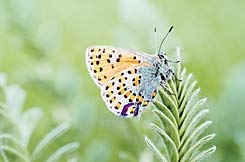By Rinat Zafarir

The tubers, for example, were moved
By Rinat Zafarir
More and more human intervention is required to protect plants and animals in the wild from extinction
Crowds of visitors have come to the Hula Valley in recent weeks to view tens of thousands of cranes in the area. Apparently this is a rare natural phenomenon, but the presence of the cranes in the area reflects an ever-expanding phenomenon in which humans provide animals and wild plants with a means of existence and influence the scope of their presence.
The cranes began to stop in the area because of the agricultural crops in the area, in numbers that kept increasing after they started feeding them in an orderly manner, to prevent them from damaging the crops. The waterfowl in the area also came to it after 11 years ago the existing reservoir flooded part of the area where the historic Hula Lake used to be.
One of the most impressive birds of prey in Israel, the eagle, is currently largely dependent on feeding stations maintained by the Nature and Parks Authority. This is after his natural food source, large wild animals whose carcasses he eats, has dwindled.
Sea turtles no longer hatch from eggs laid by their mothers on the sands of the beaches. The people of the Nature and Parks Authority take the eggs to special farms so that they are not harmed, and allow the hatched turtles to return to the sea. They also set up artificial amphibian ponds after the natural ponds disappeared.
The peregrine falcon in Ramat Menashe now comes to nesting boxes that are built for it so that it has a place where it can raise chicks. Some of Israel's largest wild animals - the ferret (wild donkey), the wild donkey and the ram - returned to frequent nature thanks to repatriation programs, after these species became extinct.
Not only wild animals are subject to constant human management, known in the professional parlance as "interface" - an intervention whose purpose is to help preserve nature. Today, there is almost no area of forest or grove that does not undergo constant thinning by mechanical means because the wild animals that grazed it in the past and served as a regulator of plant development are no longer found.
Many wild plants are transplanted from place to place to save them from construction plans. The Trans-Israel Road Company does this on a large scale and only recently contractors on its behalf finished moving many tubers of plants such as cyclamen from the Ramat Menashe area to protected places. During the copying, the largest cyclamen tuber in Israel was found, and it will be transferred to the Botanical Garden in Jerusalem.
A contemporary example of the extent of human intervention is a proposal recently put forward by the members of the Mammal Center of the Society for the Protection of Nature. In a survey they conducted in the coastal area, the people of the center found that one of the reasons for the disappearance of wild animals is increased predation by cats. They recommend establishing regulations requiring cat owners to attach a small bell to the collar; The wild animals will hear the bell, know that a cat is approaching and will be able to run away. In the prairie area, the possibility of moving the last individuals of the rare prairie deer to a fenced area is currently being considered so that they can be saved from predation and prevent their extinction.
Even in urban areas the interference in the lives of wild animals deepens. An example of this is the surveillance conducted by the Society for the Protection of Nature for birds, wild plants and deer within Jerusalem. In Tel Aviv, an initiative was recently launched to establish nesting boxes for souls.
Actions such as restoring streams and preferring the development of a natural forest over the planting of pine forests, may help in the future to revive the ecosystems, give wildlife food sources and nesting possibilities, and thereby reduce the need for the interface. But at the same time, the trend of a constant reduction in open areas continues in Israel, and it seems that in the future the Nature and Parks Authority will have to increase its intervention in many areas in order to protect plant and animal species that will find themselves under threat.
https://www.hayadan.org.il/BuildaGate4/general2/data_card.php?Cat=~~~102242563~~~119&SiteName=hayadan
